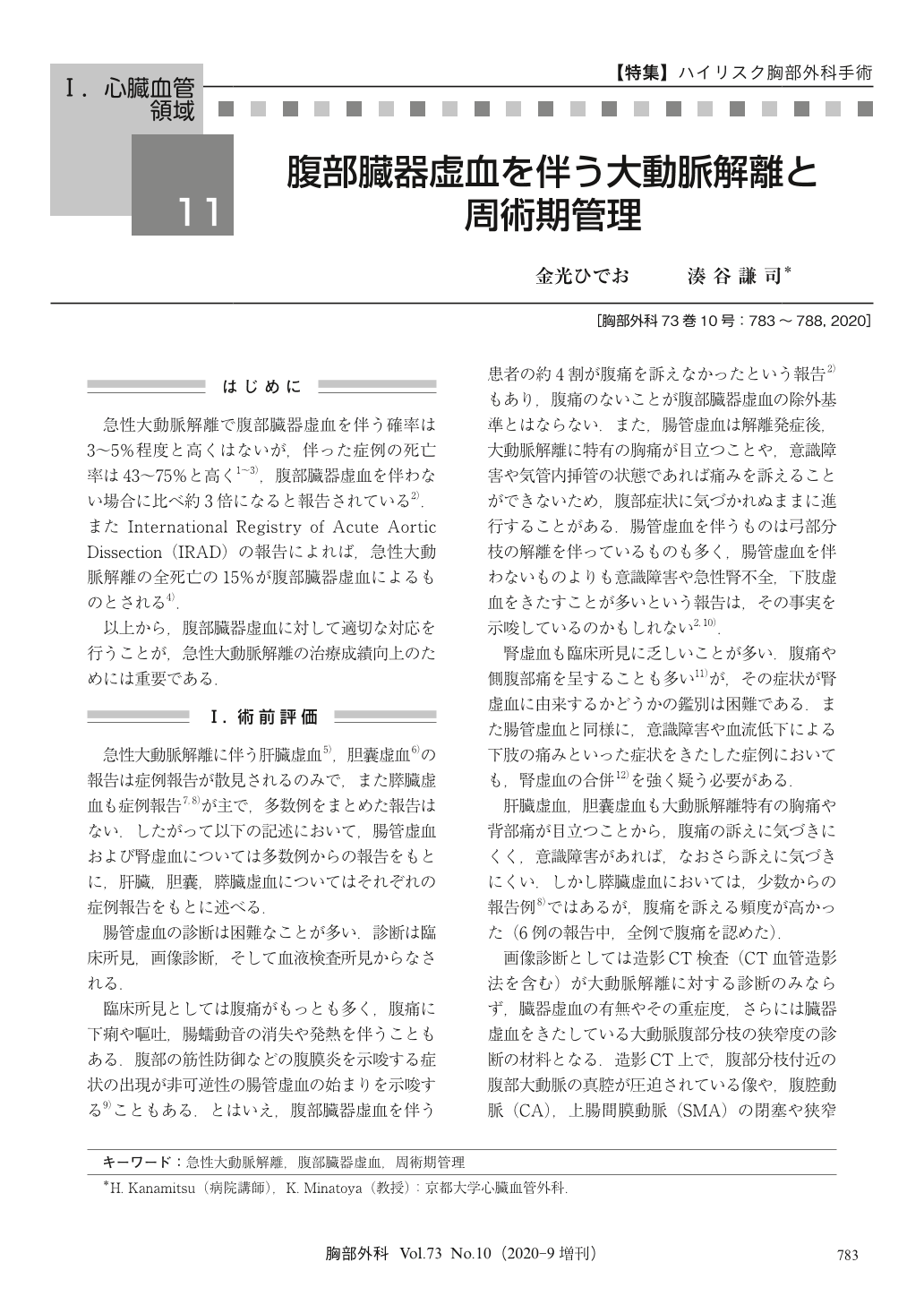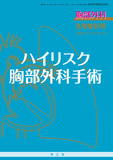Japanese
English
- 有料閲覧
- Abstract 文献概要
- 1ページ目 Look Inside
- 参考文献 Reference
急性大動脈解離で腹部臓器虚血を伴う確率は3~5%程度と高くはないが,伴った症例の死亡率は43~75%と高く1~3),腹部臓器虚血を伴わない場合に比べ約3倍になると報告されている2).またInternational Registry of Acute Aortic Dissection(IRAD)の報告によれば,急性大動脈解離の全死亡の15%が腹部臓器虚血によるものとされる4).
Mesenteric malperfusion is reported as a complication associated with acute aortic dissection (AAD) in 3~5% cases, and one of the adverse risk factors for survival. The mortality rate associated with malperfusion due to AAD is higher than that without malperfusion. To improve the clinical outcome, it is important to address the mesenteric malperfusion appropriately.
Mesenteric malperfusion remains a diagnostic challenge. Abdominal pain is the most common symptom, but a nonspecific of acute mesenteric ischemia. Computed tomography (CT) including CT angiography is the gold standard in the diagnosis of aortic dissection and the mesenteric malperfusion. No single serum marker, including lactate, is reliable enough to diagnosis mesenteric ischemia.
The optimal treatment for mesenteric malperfusion due to AAD is to restore blood flow to the ischemic area as early as possible, while minimizing the risk of thoracic aortic rupture. Those patients with malperfusion but no significant organ ischemia should be treated with immediate surgical repair. Those patients with malperfusion and significant organ ischemia and hemodynamically stable should be treated with mesenteric reperfusion, followed by surgical repair.
The management of mesenteric malperfusion associated with AAD requires a tailored approach to improve outcomes. After successful restoration of mesenteric perfusion, patients should be monitored closely, and the bowel should be inspected when there is doubt regarding its viability.

© Nankodo Co., Ltd., 2020


